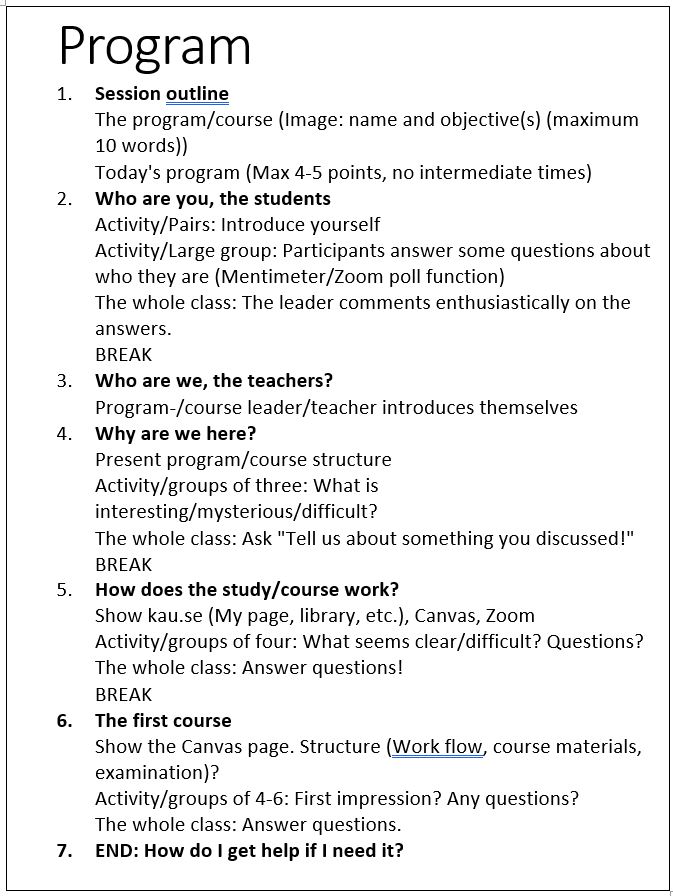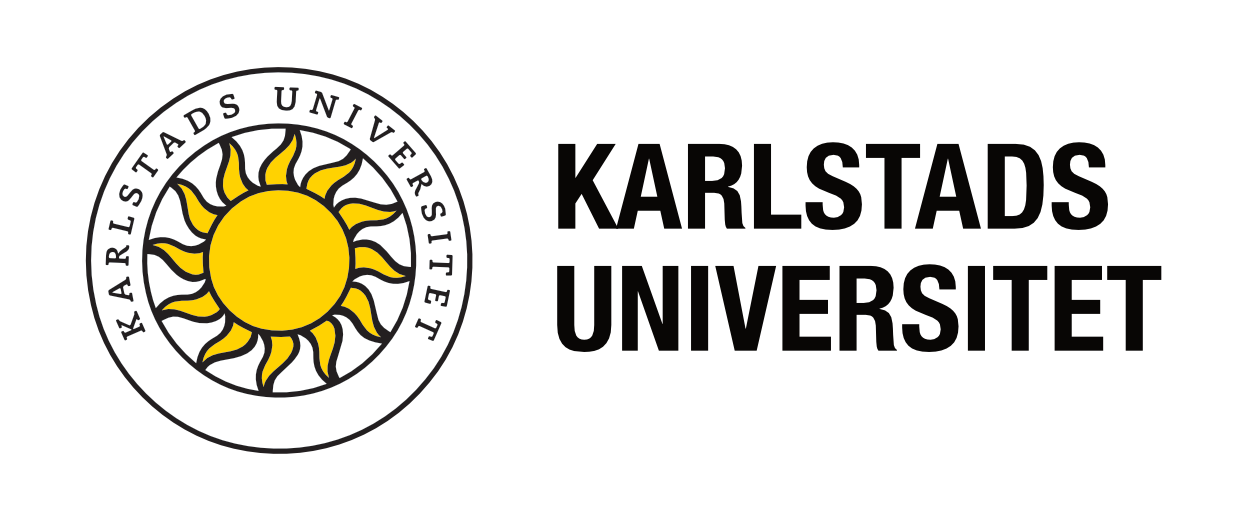How do you set up a really good online course introduction ? What elements should it contain? In which order? How do we keep the students interested? How do you design a good session schedule, one that also function well when leading the session together with colleagues? Here is a commented example that can also work as a template.
What do we want to achieve?
The purpose of the intro session is that the students:
- Gain an overview of what to expect and how the courses will work
- Experience that the program/the first course/the course leaders are well organized
- Have talked to several other students (The example creates direct contact with about 10 other individuals!)
- Have a clear picture of their immediate next work tasks (for the first few days)
What is the plan for the introductory session?
Here you get a template plan (a commented example) for a session in Zoom for the intro of an entire education program. The example session takes about 2 hours 20 minutes to complete. The example deals with both the education program and its first course. If you modify it to apply to a single course, it will thus be shorter. It can of course be modified to suit different target groups, contexts and duration.
It is intentionally designed so as not to be locked to a certain group size and it is suitable for relatively large student groups.
The example aims at illustrating several aspects:
- Show an example of how to describe a schedule for a work session
- Show how such a session can include activating elements, even if the group is large and unfamiliar with working together
- Show examples of how this can be done online
- Show how to choose specific work formats to create positive expectations and get the students used to being active, interacting with each other and establishing open relationships with the teachers
- Show examples of how to think about purpose and adaptations based on the example
Below you see a summary of the session schedule from the example, with seven steps through the session and short supportive notes that indicate their purpose and format.
In the word document that you can download (see below) you will find the schedule with indication of breaks, with more detailed instructions and comments on each program item. The comments apply to e.g. what kind of material needs to be prepared, examples of how to phrase yourself when initiating, instructing, ending and following up a group activity, and how to adapt the program. Feel free to use the Word document, e. g. the structure with a timetable in tabular form, as a template to design your own work session.
Below, the work session is described step by step with short comments about what they mean. Comments on each point can be found in the Word document at the bottom of this page.

From the actors to the task, from the abstract and distant to the concrete and close
The strategy is to start with the actors (who the students are (first) and the teachers (after)), then the common task: The course itself.
Always start from the big, overall picture, before proceeding to the small, close, and concrete. Start with the program’s and course’s objectives and overall content and then concretize what the work will include to reach these goals. And finally, once students have an overview of what to expect, focus on the first concrete tasks (What do we start with?).
Support to create a fully working study environment
At the beginning of a program or course, the group is new and the participants are uncertain about the social game they will face during the course. Every student needs help to get into personal contact with other students.
The example session deals with this by starting with low pressure work tasks and in smaller constellations and then move on to larger groups: First in pairs, then trios, groups of four and finally 4-6 in each group. This way we increase the social risk a bit at a time, which increases the probability that more of the withdrawn students will dare to participate actively.
Throughout the session, we form new groups through random division. In this way, the probability increases that most students will have talked face to face with several of the others. This is an important step for them to start building a social study environment.
The first group exercises (in pairs) are about superficial, harmless, unpretentious things (Who are you? Who am I?). Step by step throughout the session, the focus is shifted more and more towards the upcoming work (Where the risk is greater that you feel ignorant and uncertain).
Resourses
The document’s first page presents an overview table with the program’s chronology (the duration of each activity, the number of minutes from start), the division in sections/steps, the type of material that needs to be prepared. After this overview table, each section/step is commented on in more detail (Its purpose, what the teacher does, what material is needed, etc.).

